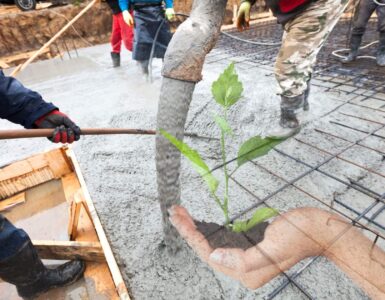Marie Curie, also known as Madame Curie, is undoubtedly one of the most iconic scientists in history. Recognized for her groundbreaking contributions to the fields of physics and chemistry, she achieved remarkable milestones in her career. Notably, Marie Curie was the fi rst woman to ever win a Nobel Prize and the only person to win it twice, excelling in different fields.
Her remarkable partnership with her husband, Pierre Curie, played a pivotal role in their discoveries of polonium and radium. Moreover, Marie Curie’s dedication led to the establishment of the Radium Institute, a significant institution for scientific research. Despite her exceptional achievements, an intriguing aspect of her life that has sparked curiosity and concern revolves around her still radioactive notebooks.
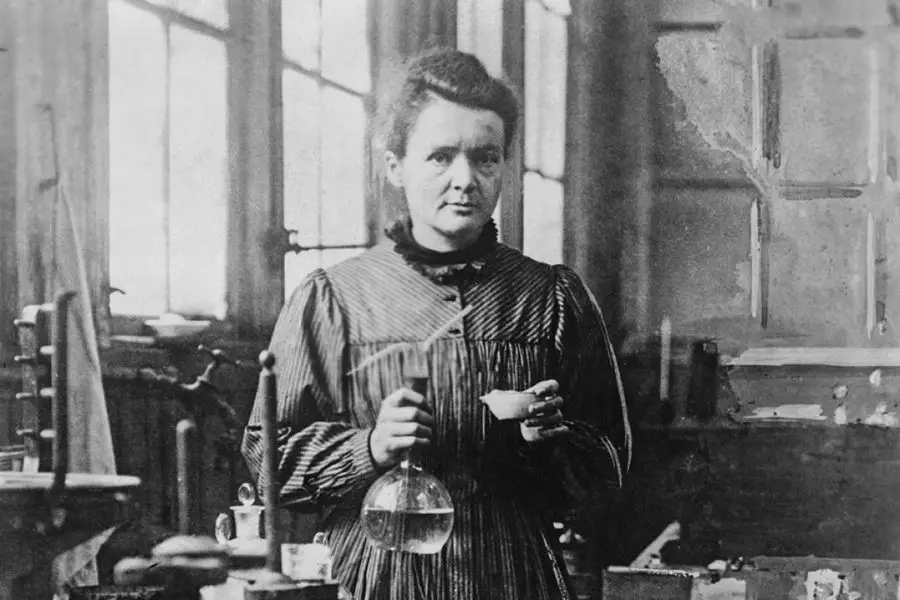 Marie Curie in her laboratory – Image: Super Interessante
Marie Curie in her laboratory – Image: Super Interessante
Discoveries by Madame Curie and Pierre Curie
Marie Curie, alongside her husband Pierre Curie and physicist Henri Becquerel, made a groundbreaking discovery in 1898. They uncovered the radioactive element, which led to the isolation of pure radium and the development of techniques for measuring its radioactivity. This remarkable achievement propelled the fields of physics and chemistry forward, bringing new opportunities for research.
Marie Curie’s unwavering dedication to her work continued despite the risks involved. Throughout her career, she worked extensively with radioactive materials, including polonium and radium. Unfortunately, the long-term exposure to ionizing radiation took a toll on her health, leading to various ailments such as anemia and cataracts. Tragically, she ultimately succumbed to aplastic anemia caused by her prolonged exposure to radiation.
Even in the face of adversity, Marie Curie remained committed to her scientific pursuits. Following the death of her husband Pierre Curie, she carried on their legacy and made remarkable contributions to the field. Not only did she discover new elements, but she also coined the term “radioactivity” and developed techniques for isolating radioactive isotopes. Her tireless efforts paved the way for advancements in modern cancer treatments and nuclear energy.
Marie Curie’s achievements were recognized and celebrated throughout her lifetime. She became the first woman to win a Nobel Prize and later went on to receive a second Nobel Prize, making her an iconic figure in the scientific community. Her work laid the foundation for the establishment of the Radium Institute and the Marie Curie Radium Fund. Her legacy continues to inspire future generations of scientists, and her name remains synonymous with groundbreaking discoveries and perseverance.
This remarkable scientist, Marie Sklodowska Curie, conducted her groundbreaking research at the University of Paris and the renowned Curie Laboratory. Her contributions to science and society are immeasurable, leaving an indelible mark on the world.
Marie Curie Died of Anemia
Despite her health issues, Marie Curie persisted in her research and continued to work with radioactive elements. However, years of exposure took a toll on her body, and she eventually died at the age of 66 from aplastic anemia – a condition that affects the bone marrow’s ability to produce blood cells.
Marie Curie’s death was attributed to years of exposure to radiation, but her notebooks were found to be highly radioactive as well. In fact, her papers and personal belongings are still considered too dangerous to handle without protective gear.
But even after her death, in 1934, the radiation threat continued. Her laboratory notebooks, which contained her notes, experiments, and discoveries, were also highly radioactive. Most people would be alarmed by this situation, but not scientists. For them, the possibility of studying these notebooks is more exciting than the danger and the reward is worth it.
Marie Curie and Henri Becquerel
Henri Becquerel and Marie Curie shared a pivotal connection in the field of radioactivity. Becquerel’s accidental discovery of uranium’s radioactive properties in 1896 laid the foundation for Marie Curie’s groundbreaking research. Inspired by Becquerel’s work, Curie began her own investigations into radioactivity, which ultimately led to the isolation of two new radioactive elements, polonium and radium.
Their collaborative spirit and the exchange of scientific knowledge played a significant role in advancing our understanding of this new and enigmatic phenomenon, ultimately earning them both Nobel Prizes in Physics (shared with Pierre Curie, husband of Marie Curie) in 1903.
This partnership between Henri Becquerel and Marie Curie exemplifies how scientific curiosity and cooperation can drive significant progress in the world of science.
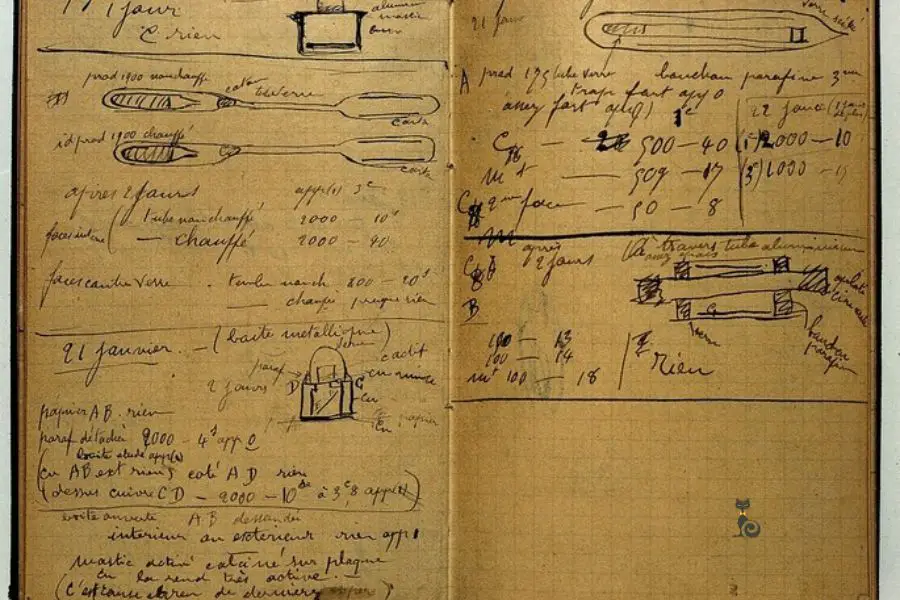
Radioactive notebooks
Despite any reward to science that studying Marie Curie’ s notes could yield, the notebooks were so radioactive that for many years they were stored in a lead box to minimize radiation exposure. But even so, the National Library of France’s staff, where the notebooks were kept, were concerned about prolonged exposure to radioactive material. In 2011, they decided to move the notebooks to a safer location.
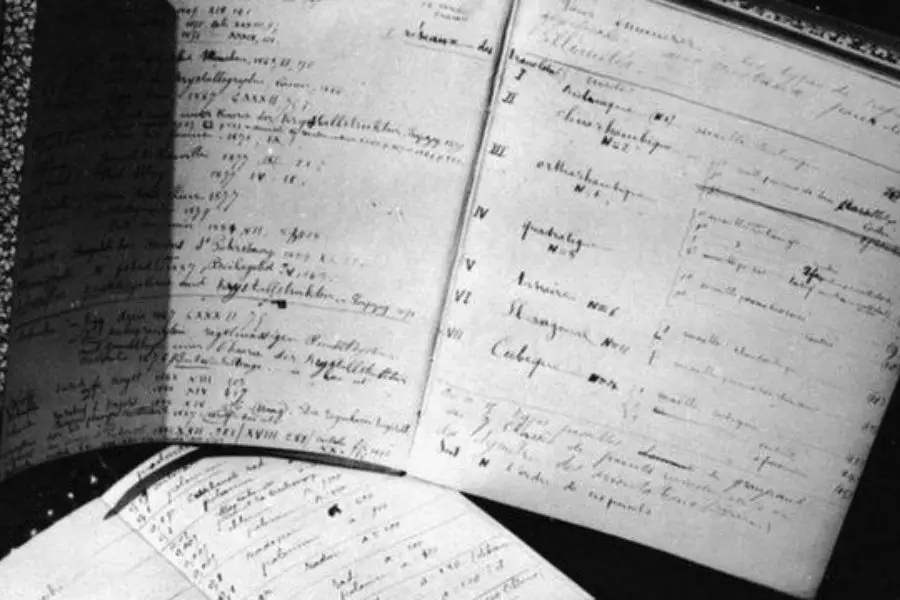
Today, the notebooks are still highly radioactive, and handling them is extremely dangerous. Even the simplest exposure to them can be harmful to human health. To study them, scientists must wear protective clothing, gloves, and special masks. Besides that, they work in highly controlled and monitored areas, in addition to signing a term of responsibility and awareness of the present hazard. Prolonged exposure to them can be fatal.
But despite these risks, Marie Curie’ s notebooks remain a valuable source of information for scientists. They contain many details about her pioneering research in the field of radioactivity, including her discoveries of new chemical elements and techniques for measuring radioactivity.
Furthermore, the notebooks are a testament to the enduring power of science and Marie Curie’ s persistence in the face of adversity. She dedicated her life to understanding the world around her and making discoveries, even if it meant risking her health. Her radioactive notebooks are a stark reminder of power and dangerousness.
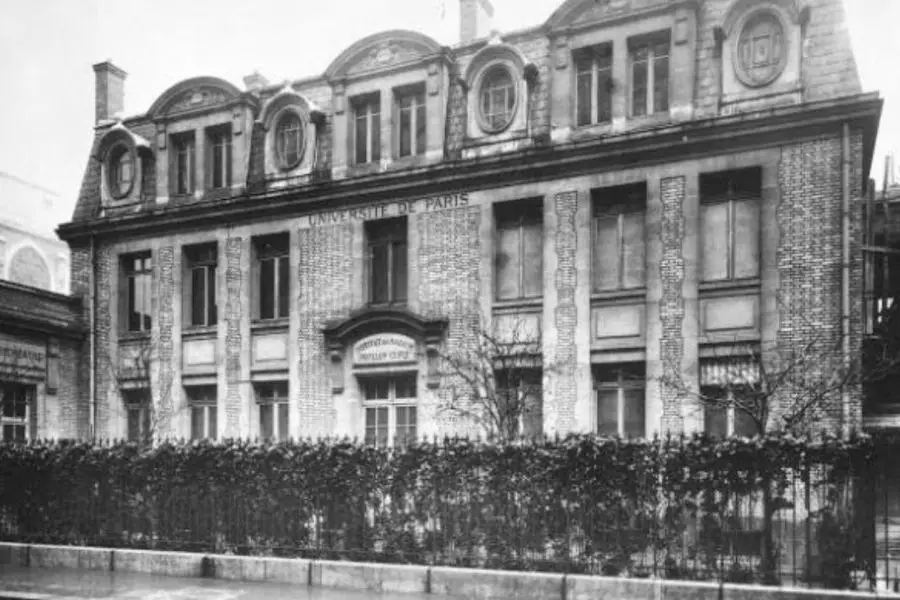 Institute of Radio, building that housed Marie Curie’s first laboratory in Paris – Credit: Divulgation – Musée Curie
Institute of Radio, building that housed Marie Curie’s first laboratory in Paris – Credit: Divulgation – Musée Curie
Laboratory
Marie Curie’ s laboratory is an iconic place in the history of science, where many of her revolutionary discoveries were made. Located in Paris on Rue Pierre Curie et Marie Curie, the laboratory is now part of the Sorbonne Université and houses a range of modern research facilities.
However, many people wonder if Marie Curie’s laboratory is still radioactive. The laboratory was abandoned after her death, in 1934, and for decades, radioactive materials sat inside, releasing radiation. As a result, the place was highly contaminated and dangerous for visitors.
In 1990, the French Alternative Energies and Atomic Energy Commission (CEA) decided to clean up the laboratory and its surroundings, removing all radioactive materials and contaminated soil. The decontamination process took several years and involved the removal of tons of soil and radioactive waste. Today, the laboratory is considered safe and radiation-free.
Despite being a historic and important place for science, Marie Curie’s laboratory is not open to the public. Due to the delicate nature of the research materials and equipment that exist on-place, only accredited and authorized researchers have access to the facilities.
Marie Curie’s daughter
Marie Curie’s daughter, Irène Joliot-Curie, continued her family’s legacy of scientific excellence. Born in 1897, Irène followed in her parents’ footsteps, pursuing a career in science. She made significant contributions to the field of nuclear physics and radioactivity.
In 1935, Irène and her husband, Frédéric Joliot, were awarded the Nobel Prize in Chemistry for their discovery of artificial radioactivity, a breakthrough that paved the way for the development of nuclear medicine. Irène Joliot-Curie’s dedication to science and her pioneering research further solidified the Curie family’s prominent place in the history of scientific achievement.
 Curie Museum, Paris
Curie Museum, Paris
The Curie Museum
Visiting the laboratory is prohibited, however, there are other ways to learn about Marie Curie’s history and her legacies. The Curie Museum, located in Paris, is an excellent option for those who want to learn more about the life and work of the scientist. The museum houses a vast collection of Marie Curie’s personal effects, letters, books, and research equipment, as well as interactive and educational exhibits.
In addition, the Institut Curie, a non-profit organization founded in 1909 by Marie Curie, works to this day in support of cancer research and treatment. The foundation aims to continue Marie Curie’s legacy by promoting scientific excellence and progress in the fight against cancer.
In summary, Marie Curie’s laboratory is an important place in the history of science, but it is no longer radioactive and is not open to the public. However, there are other ways to learn about Marie Curie’s life and work, as well as her legacy in cancer research and treatment. The Institut Curie and Curie Museum are excellent options for anyone wanting to learn more about this remarkable scientist and her contribution to the world of science.



